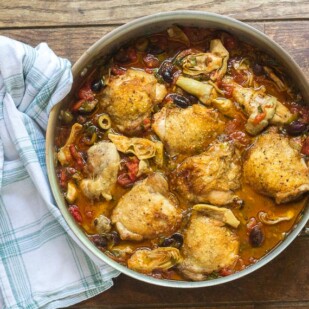Summer means outdoor picnics, potlucks with friends, and camping. And we need to tote our food safely and efficiently, and that means coolers are involved. We are not going to tell you the best cooler (you can look that up if shopping for a new one, or maybe you have a trusted container), but we are going to show you how to pack your cooler. There are ways to pack your cooler for cooling and food preservation efficiency. None of this is hard, but there are definitely some tricks.
Ice, Ice, Baby

When it comes to keeping food cold, you have choices: we will explore ice itself, and ice packs of various kinds.
Let’s look at ice first. Use big bags of cubed ice to pre-chill your cooler. Pre-chilling will set you up for success. If you have a smaller cooler, chill it in the refrigerator overnight. Otherwise, fill with bags of ice.
For larger coolers, do this somewhere out of direct sun and where you can drain the cooler easily before packing it the next day. Make sure to drain and wipe dry.
Have blocks of ice ready for your packing (if using ice). Blocks will last longer than cubes. You can buy large airtight plastic containers at the dollar store and use those. Fill with water and freeze overnight before using.
You can also freeze large plastic bottles (like 64-ounce size) with water to make blocks of ice. As it melts, you can use for drinking.
Let’s look at ice packs next.
Ice Packs: Make a Wise Choice
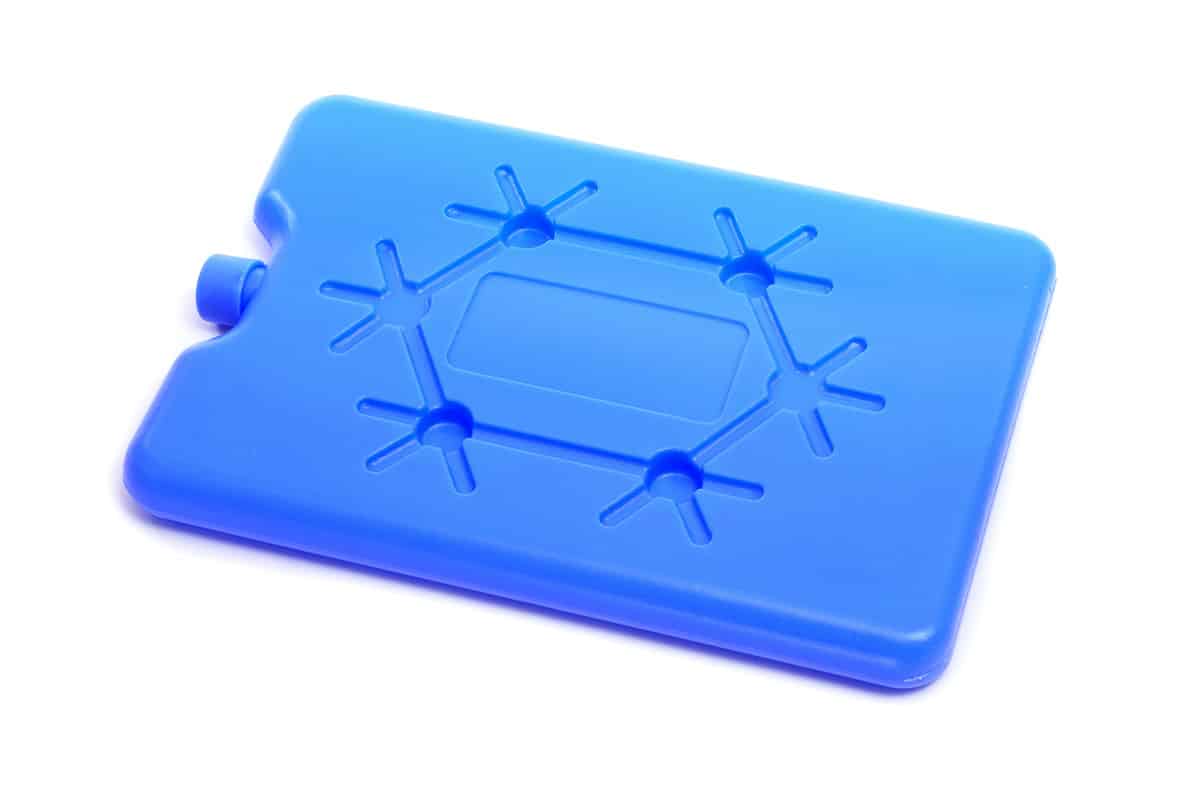
“Ice pack” is the catch-all term for any kind of portable container that is filled with liquid or refrigerant gel. These can be very flat and small enough to fit into a child’s lunchbox, soft (which are best for medical uses, as are “instant ice packs”), to much larger, hard-shelled examples.
Our focus is on those liquid and gel filled packs used for food. Here are some factors to consider:
- The larger the ice pack, the more cold retention
- Make sure the pack(s) can fit in your freezer for pre-freezing, and that they can fit in your cooler.
- Ice packs don’t leak (well-made ones, anyway)
- Ice packs can be re-used
- Ice packs often freeze to a colder temperature than ice
- Ice packs often retain cold better than ice
- Ice packs vary; some chill better than others, and some are filled with toxic materials. Know what you are buying.
How Much Ice or Ice Packs Do You Need?

OK, this was an eye opener. Basically, none of us have been using enough chilling factor. The pros say use TWICE as much ice or ice packs than food by weight. Yup, you read that right. Plan accordingly.
Timing Is Everything

Here is a timeline to consider:
- Buy enough chill packs and/or have ice frozen in blocks tailored to the size of your cooler.
- Make sure you will have enough per weight of food to be packed.
- Freeze ice packs or ice long enough to freeze as solid as possible.
- Pre-chill your cooler.
- Know the capabilities of your cooler. Some keep food colder than others.
- If you are chilling for the day in the shaded woods, your needs are different from a day at the beach in the blazing sun with no shade.
- Similarly, if you need to chill for the day, that is very different from needing to chill overnight, or even for several days when camping. Buy appropriate coolers and ice packs, etc.
One Cooler Or Two?
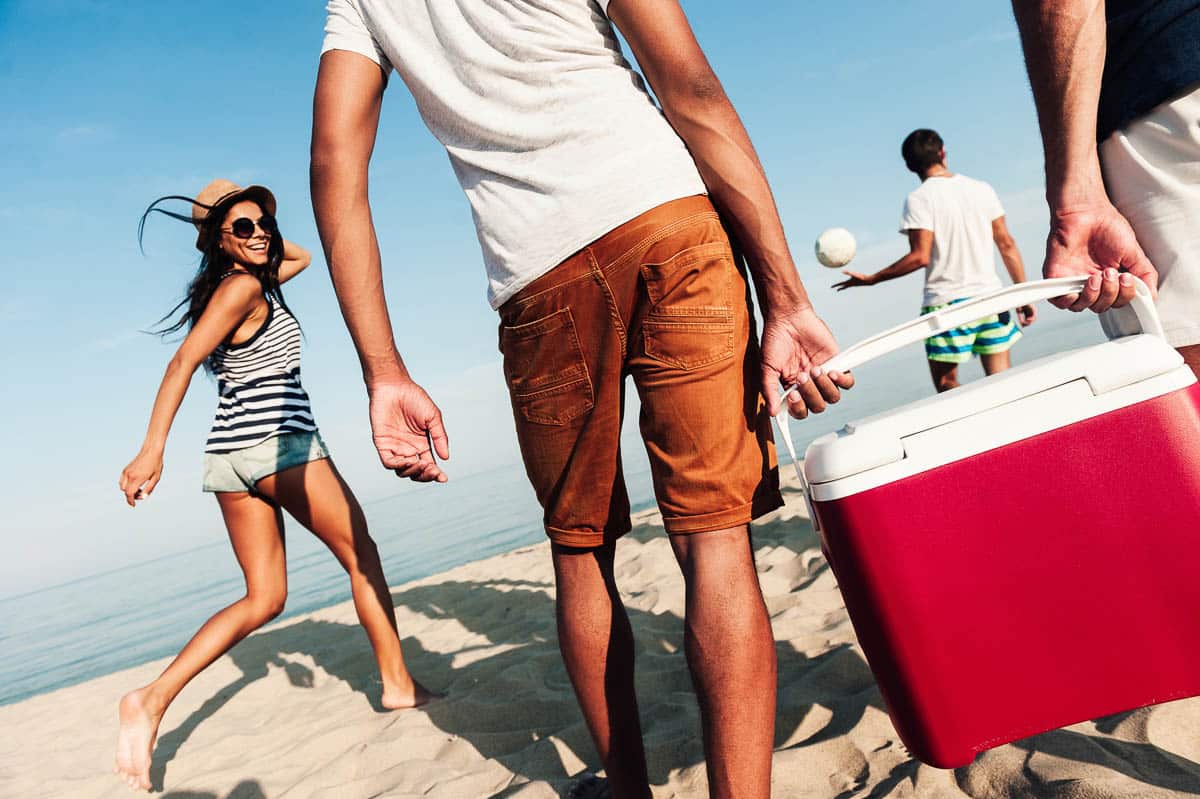
You might consider having two coolers on hand: one for beverages and one for food. Chances are folks will be reaching for drinks more often, and every time you open a cooler, you raise the temperature. By having drinks separate, your perishable foods will be better protected from rising temperatures.
How To Pack Your Cooler
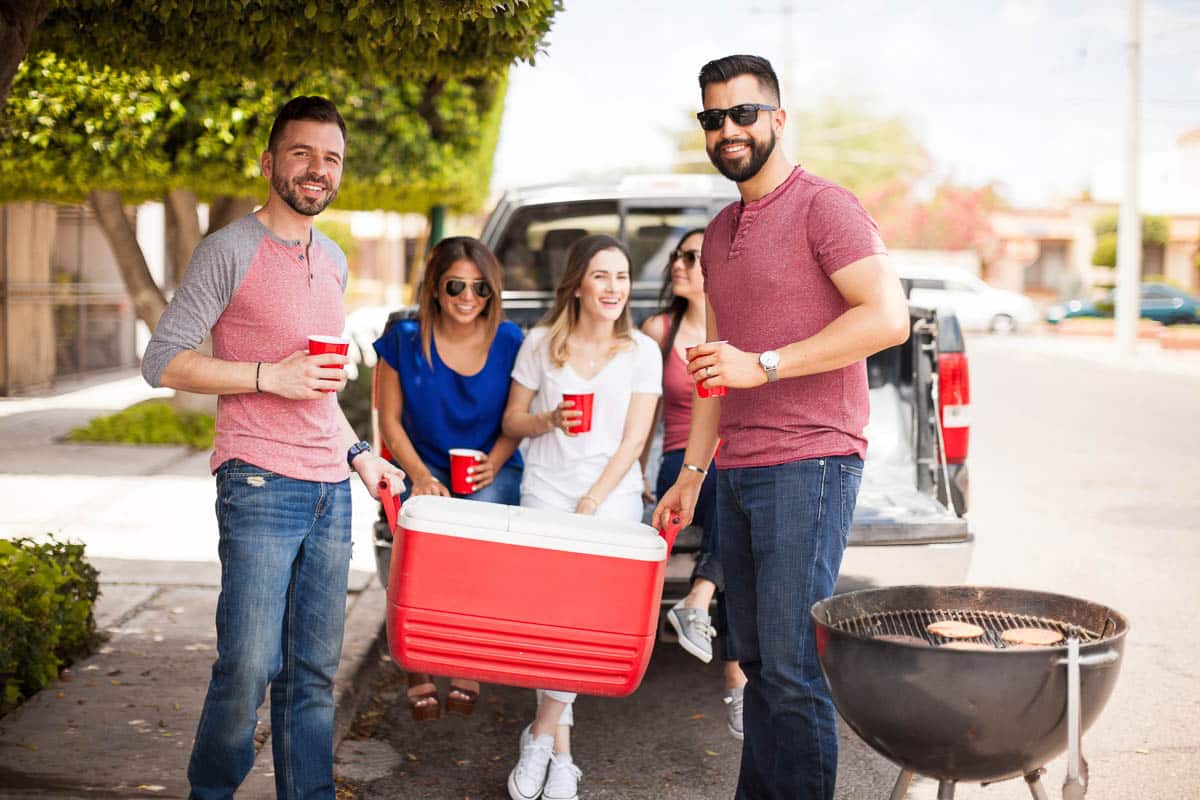
Freeze what you can. Not everything is freezable (don’t freeze those hardboiled eggs), but if there is anything that can be frozen, freeze it for maximum chill.
Begin by placing your large blocks of ice/ice packs on the bottom of your cooler.
Have all foods in water-tight containers. You can use vacuum-sealed, plastic or metal containers, or zip top bags. Even if something comes in a packages, you might want to re-package it. For instance, juices from meat could leak from the supermarket wrapping, or the cardboard surrounding beer cans would get water-logged, disintegrate, and make a mess.
Air pockets are the enemy. Place food on top of the ice blocks, then pour in ice cubes to fill in the nook and crannies. One technique the pros use is to alternate layers of food and ice (or ice packs).
Some experts use wire shelf risers to separate layers and keep things organized.
Pack the cooler to the brim. Flexible ice packs can be laid on top as a final layer.
Using Your Cooler
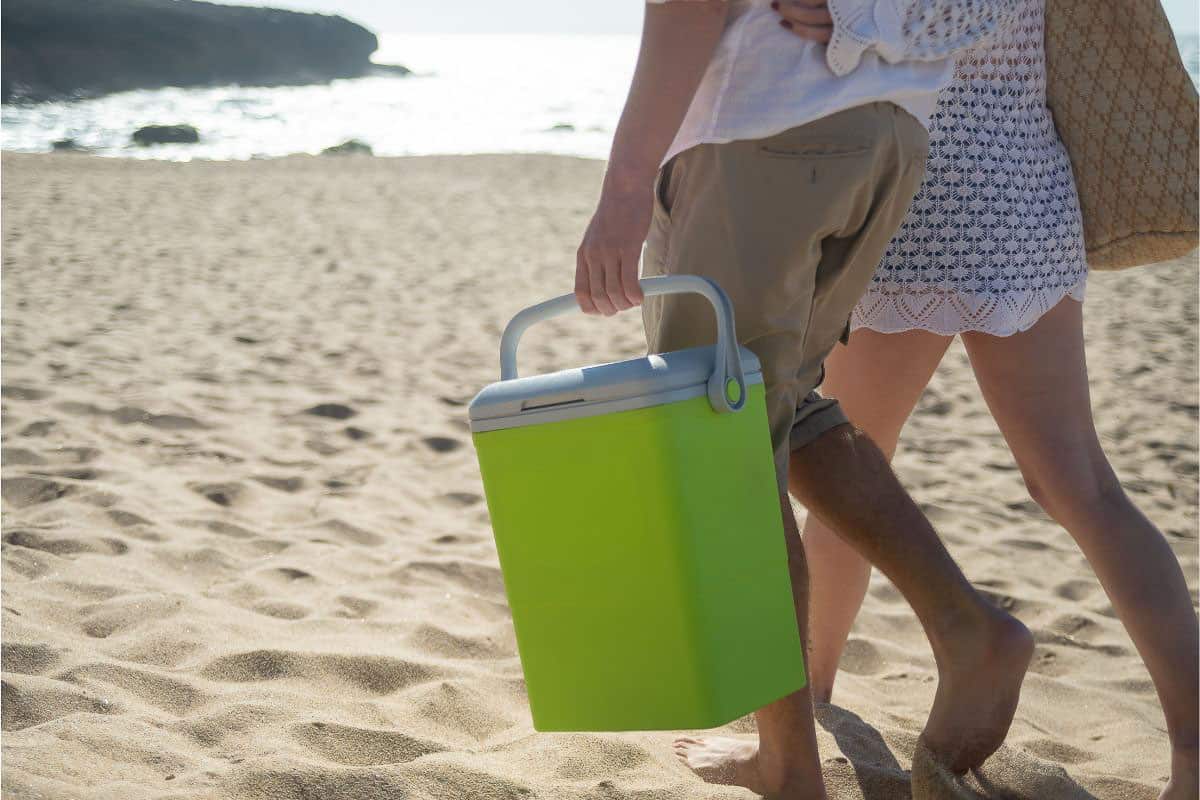
When it comes time to use your cooler, use it wisely. Don’t just flip that top open without a game plan. Know what you want, and where it is in the cooler. Keep the top open for as little time as possible. If you have used the flexible ice packs on top, you can peel back just a corner to access what you need, keeping everything else as cool as possible.
Some people suggest making a cooler “map”, so you know where everything is. Sounds like a good idea, but we are never that organized.
To Drain or Not To Drain
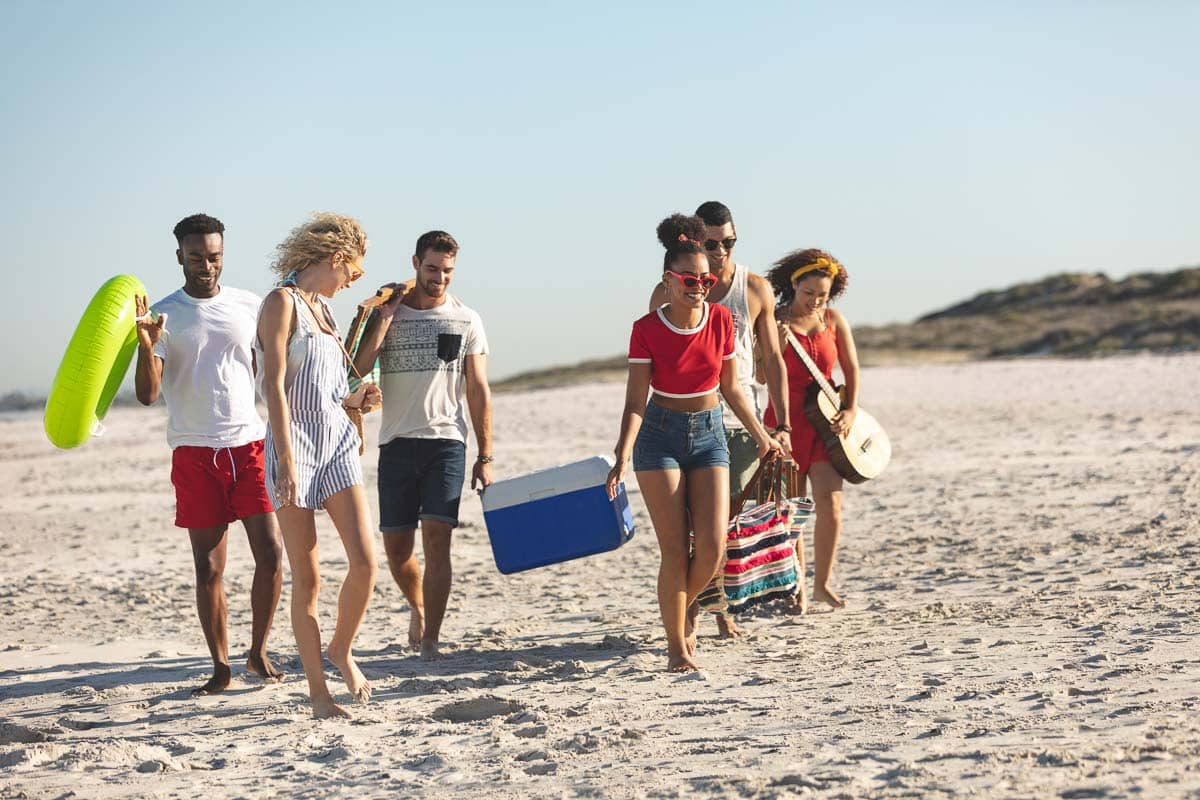
If you have used ice, it is going to melt. Should you drain off the ice water? This depends on many factors. If you are going to replace your melted ice with fresh ice, then drain it, but this is not always possible.
If you cannot refresh with new ice, leave the melted ice water in there. It will help the cooler stay colder than the air would, which would replace that ice water.
Storing Your Cooler
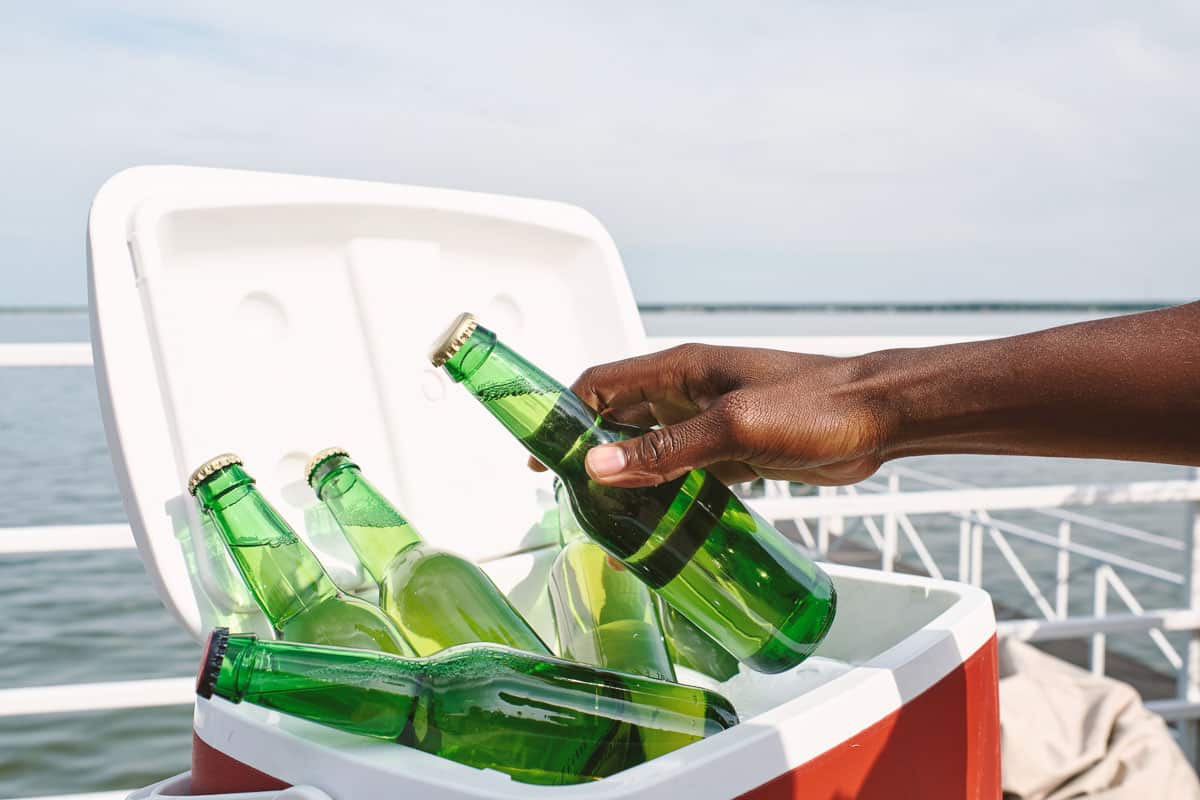
While your cooler is in use, keep it out of direct sun if you can. Blankets put on top of the outside of the cooler to insulate can help. Basically, keep it as cool as you can.
Transporting Your Cooler
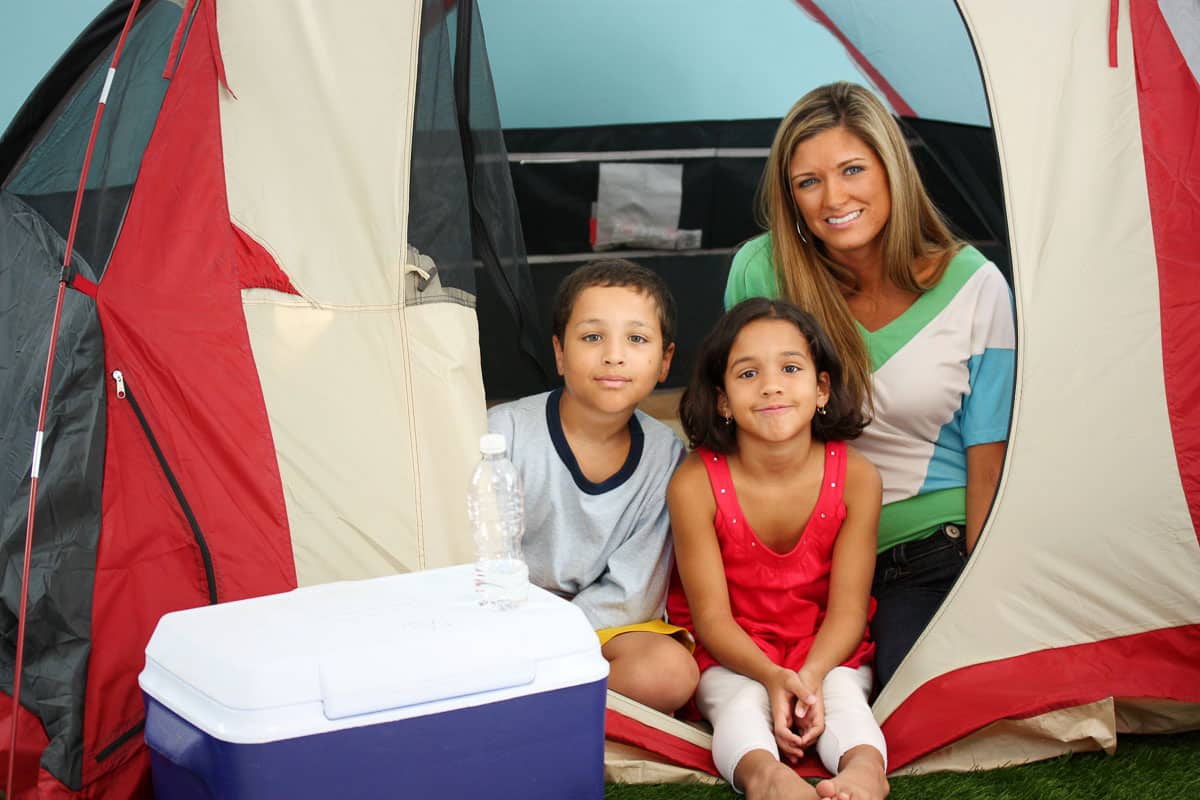
Similarly, don’t place your cooler in your car where the sun is going to be beating down on it. They also don’t do well in sealed trunks. Best to have the cooler in the car with you.
Safety: Use a Thermometer

Refrigerator thermometers are quite inexpensive; you can find them for a few dollars. Refrigerated food is safe to eat if kept below 40°F; a thermometer will let you know exactly what is going on. Put it inside the cooler itself. Some folks attach it to the inside of the lid, but if you open and close the lid a lot, this will skew the readings.
30 Perfect Picnic Salads
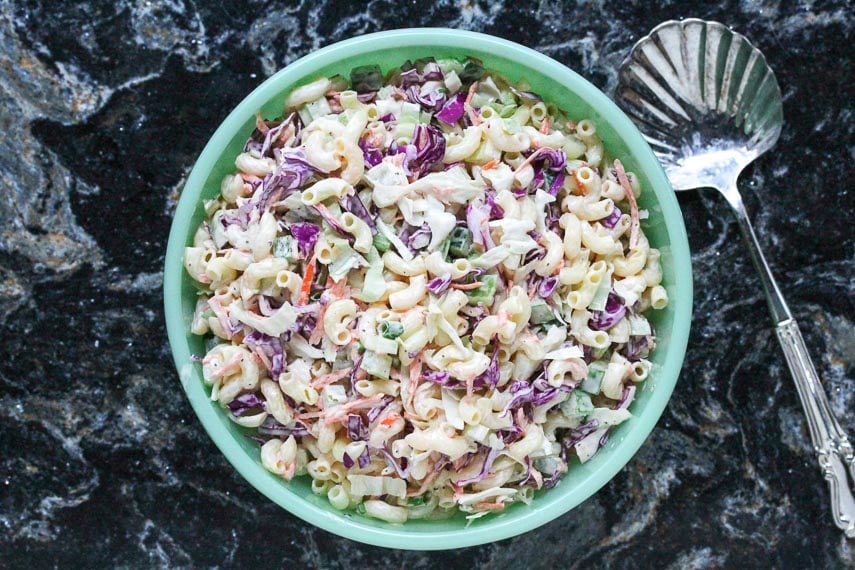
Let’s have a picnic! Whether it is at a local park, a destination far away, or your back yard, spread out the blanket and enjoy one (or two or three) of our delicious, seasonal salads! Pasta salads, potato salads, slaws, chicken salads, all vegetable salads, and more. Something for everyone. Read 30 Perfect Picnic Salads
The Ultimate Collection Of Summer Get Together Low FODMAP Recipes
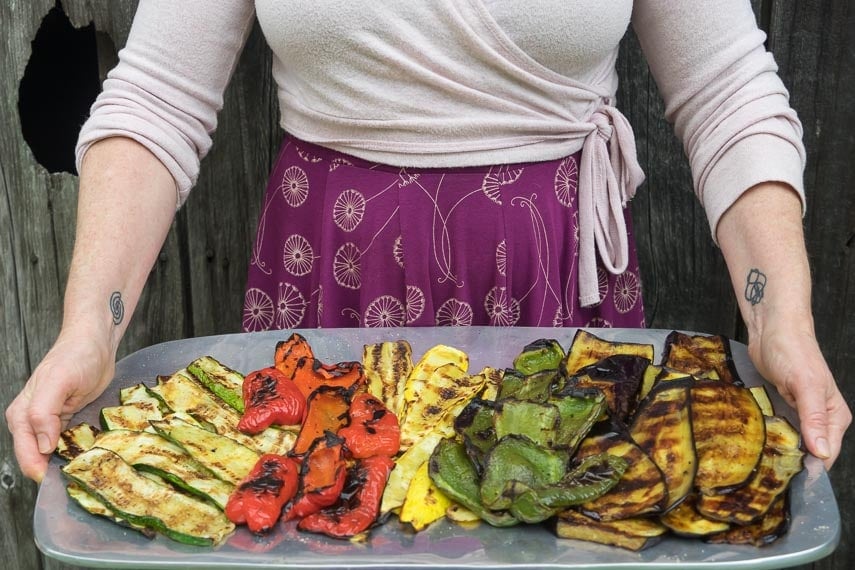
How do you celebrate summer get-togethers? Outdoors around the grill? Indoors with a potluck? Looking for juicy burgers, salads, BBQ sauces, and vegan and vegetarian fare? We’ve got it all, including homemade dips and salsas, refreshing drinks, and one-bowl baked desserts. Celebrate summer holidays – or just any old day – with over 90 tasty treats.
Read: The Ultimate Collection Of Summer Get Together Low FODMAP Recipes
15 Grill Recipes That Are Way Better Than Your Regular BBQ Fare
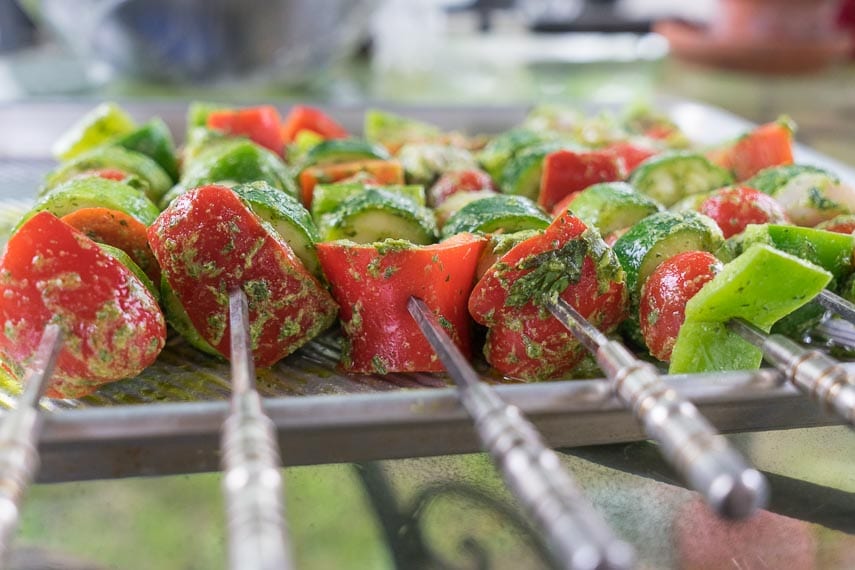
Don’t settle for the same old hot dogs and burgers on the grill. You can fire up your imagination and your taste buds with these 15 creative recipes that go beyond the basics. From pizza with a crispy crust to a hearty bread salad, from succulent beef to tender fish and chicken, from smoky sides to zesty salsas, you’ll find something to satisfy every craving and impress every guest. Get ready to unleash the full potential of your grill and enjoy the delicious results.
Read: 15 Low FODMAP Grill Recipes That Are Way Better Than Your Regular BBQ Fare

